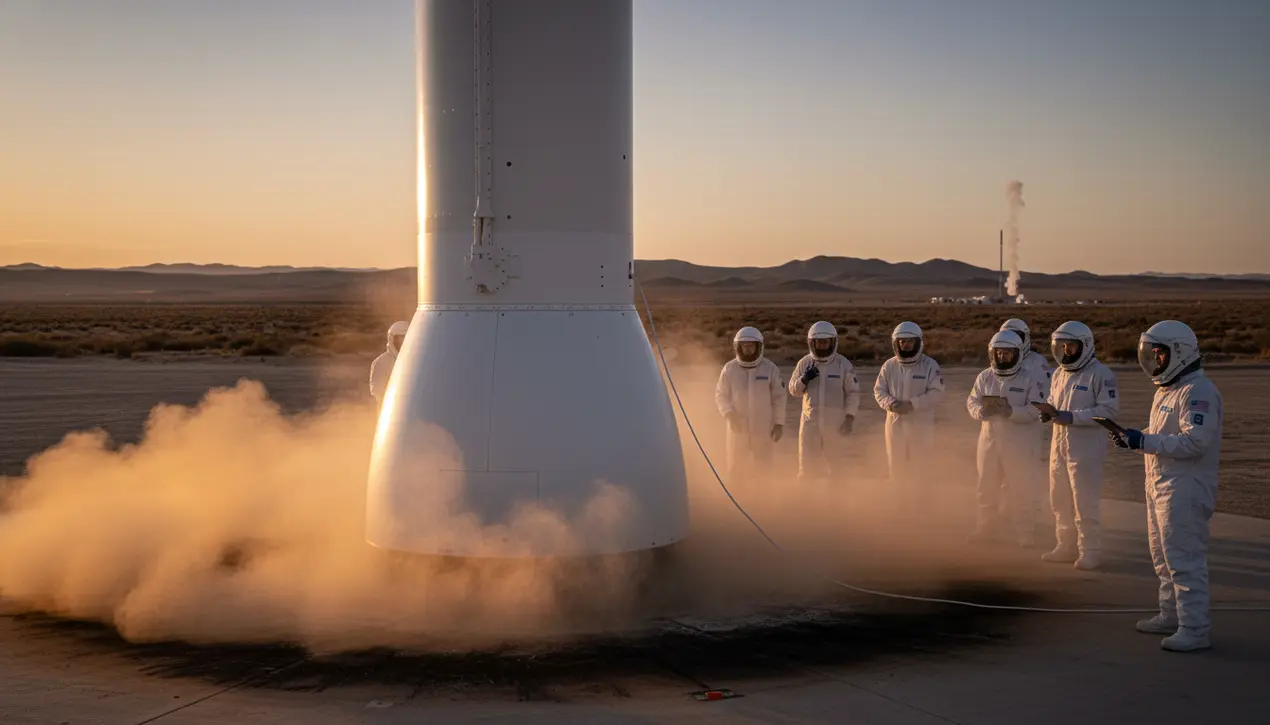
Sciencespace & astronomySpaceX and Private Space
After last week’s stunning landing, here’s what comes next for Blue Origin
TH
Thomas Green
4 hours ago7 min read1 comments
The triumphant return of Blue Origin's New Shepard rocket last week, touching down with the serene grace of a falling leaf after its suborbital sojourn, wasn't just another successful test flight; it was a thunderous declaration in the high-stakes arena of the new space race. Jeff Bezos’s aerospace venture has successfully reignited its engine, both literally and metaphorically, following a lengthy grounding after a previous mission anomaly.This flawless execution marks a critical pivot from troubleshooting to trajectory, setting the stage for what the company hopes will be a relentless cadence of missions. As one industry insider, who requested anonymity to speak freely, put it, 'There's never been such a high demand for launch as there is right now.' This statement isn't mere corporate optimism; it's the fundamental truth echoing through every cleanroom from Cape Canaveral to the Kazakh Steppe. We are witnessing a paradigm shift, a Cambrian explosion of space-based ambition where the appetite for ferrying satellites, scientific experiments, and eventually, human dreams beyond the Kármán line, is expanding at a velocity that threatens to outpace our collective launch capacity.For Blue Origin, the path forward is now a multi-pronged offensive. The immediate focus will be on ramping up New Shepard's flight frequency, methodically working through its backlog of customer payloads and re-establishing its reliability for the lucrative microgravity research market.Each successful flight is a data point that builds the statistical confidence required to safely return to human spaceflight, a cornerstone of Bezos's vision. Yet, New Shepard is merely the opening act.All eyes are fixed with bated breath on the colossal, stainless-steel specter of New Glenn. This heavy-lift behemoth, standing taller than the Saturn V moon rocket, is Blue Origin's true bid for the heavyweight title, designed to compete directly with SpaceX's Falcon Heavy and the nascent Vulcan Centaur for coveted national security contracts and mega-constellation deployments.The success of New Shepard injects vital momentum into the final integration and testing phases for New Glenn, whose first launch from Launch Complex 36 in Florida is one of the most anticipated events on the space calendar. Beyond the roar of engines lies a quieter, but equally fierce, battle for economic real estate in low Earth orbit.Blue Origin’s proposed Orbital Reef space station, a partnership with Sierra Space, represents a direct challenge to the incumbent International Space Station and a bet on a future where commerce and research in microgravity become a self-sustaining ecosystem. This is where Bezos's long-term philosophy of building proverbial 'roads to space' truly manifests.He isn't just selling rocket rides; he’s attempting to fabricate the very infrastructure upon which the off-world economy will be built. However, the landscape is fraught with challenges.The specter of SpaceX’s Starship, a fully reusable super-heavy-lift vehicle that represents an existential threat to all existing launch architectures, looms large. While New Glenn is a formidable competitor in the current market, Starship promises to rewrite the economics of spaceflight entirely.Furthermore, geopolitical tensions and the ever-present physical dangers of rocketry mean that Blue Origin’s journey is far from guaranteed. But for a moment, with the dust settling around a landed booster, we are reminded that we are living in a new golden age of exploration, a time where private enterprises are boldly shouldering burdens once reserved for superpowers, and the final frontier has never felt so tantalizingly within reach.
#Blue Origin
#rocket landing
#space launch
#commercial spaceflight
#featured
Stay Informed. Act Smarter.
Get weekly highlights, major headlines, and expert insights — then put your knowledge to work in our live prediction markets.
Related News
Comments
Loading comments...
© 2025 Outpoll Service LTD. All rights reserved.